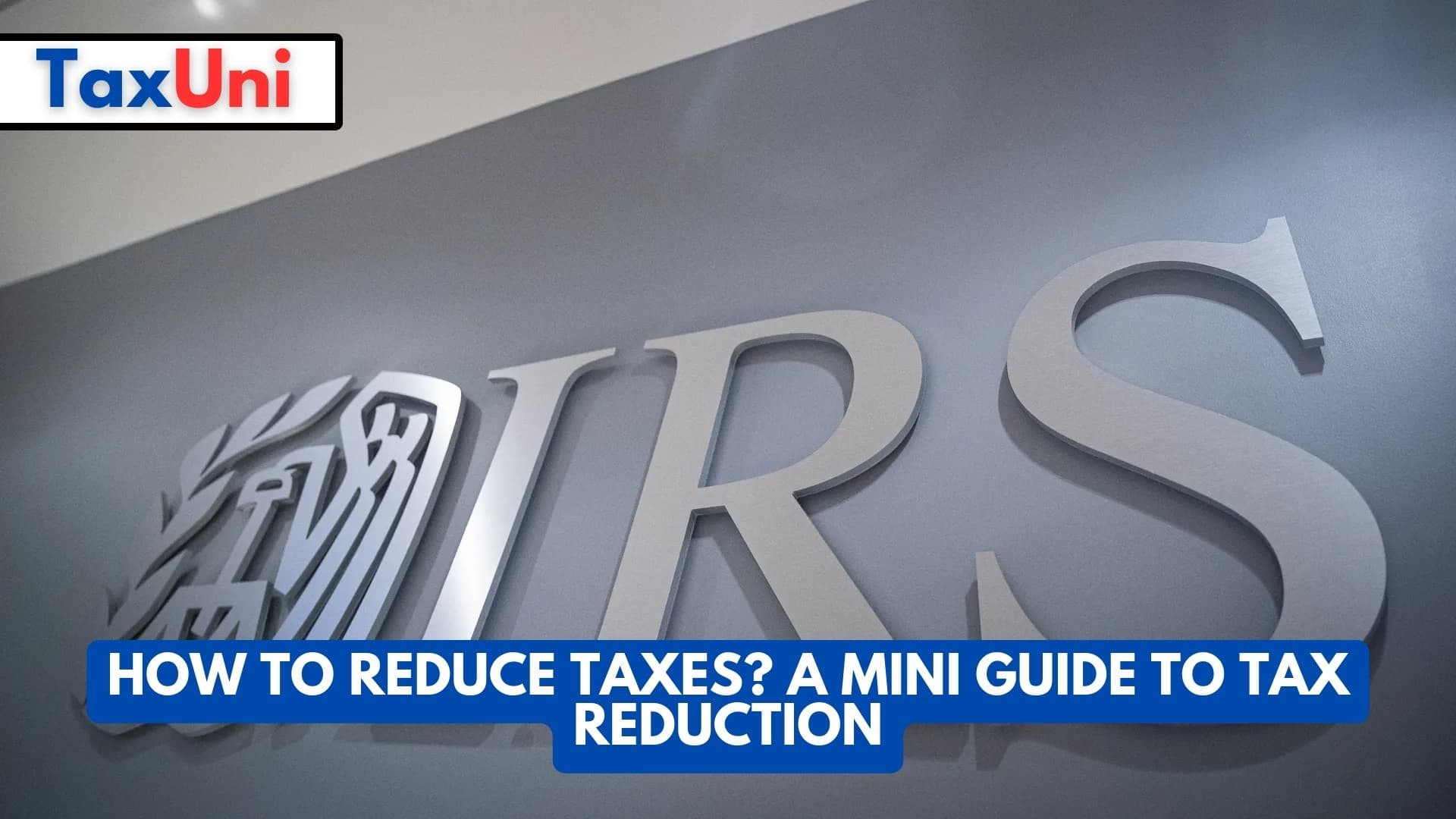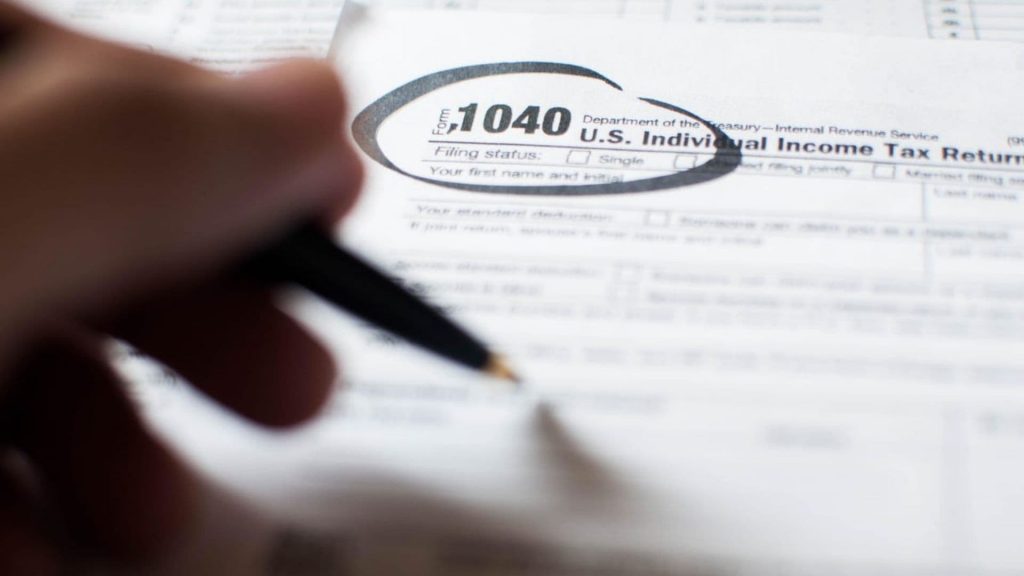How to Reduce Taxes? A Mini Guide to Tax Reduction
Tax reduction refers to a decrease in the amount of taxes owed by an individual or entity. This can be achieved through various methods, such as taking advantage of tax deductions, tax credits, and other tax-saving strategies. This guide will help you manage your taxes better.

Contents
- I. Tax Deductions
- II. Tax Credits
- III. Tax Planning Techniques
- In Summary
- FAQs
- What is the difference between a tax deduction and a tax credit?
- How much can I deduct for charitable contributions?
- Can I deduct my home office expenses?
- Can I deduct medical expenses from my taxes?
- What is tax loss harvesting?
- Can I deduct education expenses on my taxes?
- How can I reduce my taxes in retirement?
- What is a Health Savings Account (HSA)?
- How can I reduce my taxes as a small business owner?
Tax reduction refers to a decrease in the amount of taxes owed by an individual or entity. This can be achieved through various methods, such as taking advantage of tax deductions, tax credits, and other tax-saving strategies. This guide will help you manage your taxes better.
Reducing taxes is a priority for most taxpayers. It can be achieved through various strategies, including deductions, tax credits, and tax planning. With proper planning and knowledge of the tax code, taxpayers can lower their tax liability and increase their overall financial well-being. This article will discuss some effective strategies to reduce taxes, including deductions, credits, and planning techniques.
I. Tax Deductions
Tax deductions are expenses that can be subtracted from taxable income, reducing the amount of tax owed. Below are some of the most common deductions:
- Charitable Contributions: Taxpayers can deduct contributions made to qualified charitable organizations, up to a certain limit, depending on the taxpayer’s adjusted gross income (AGI). For 2024, the limit is 60% of AGI.
- Mortgage Interest: Homeowners can deduct the interest paid on their mortgage, up to a certain limit, depending on the mortgage’s size and use. For example, a taxpayer can deduct up to $750,000 of mortgage interest on a primary residence.
- State and Local Taxes (SALT): Taxpayers can deduct up to $10,000 of SALT, including property taxes, state and local income taxes, and sales taxes.
- Medical Expenses: Taxpayers can deduct medical expenses that exceed 7.5% of their AGI, including expenses such as doctor visits, prescription drugs, and medical equipment.

II. Tax Credits
Tax credits are dollar-for-dollar reductions in the amount of tax owed. Below are some of the most common tax credits:
- Earned Income Tax Credit (EITC): This credit is available to low-to-moderate-income workers and families. For 2024, the maximum credit amount is $6,800 for taxpayers with three or more qualifying children.
- Child Tax Credit (CTC): This credit is available to taxpayers with dependent children under the age of 17. For 2024, the credit is $3,000 per qualifying child.
- American Opportunity Tax Credit (AOTC): This credit is available to undergraduate students or their parents. For 2024, the maximum credit amount is $2,500 per eligible student.
- Lifetime Learning Credit: The Lifetime Learning Credit (LLC) is another education-related credit that taxpayers may be able to claim on their taxes. The LLC allows taxpayers to claim a credit of up to 20% of the first $10,000 in eligible education expenses for a maximum credit of $2,000 per tax return. The LLC is available for all post-secondary education years and courses to acquire or improve job skills. To qualify for the credit, the taxpayer must have paid eligible education expenses for themselves, their spouse, or their dependent.

III. Tax Planning Techniques
Tax planning involves making strategic financial decisions throughout the year to reduce your tax liability. Below are some tax planning techniques:
- Retirement Contributions: Taxpayers can reduce their taxable income by contributing to a retirement account, such as a 401(k) or IRA. For 2024, the maximum contribution limit for a 401(k) is $20,500 for individuals under 50 years old and $27,000 for those 50 and over.
- Timing of Income and Expenses: Taxpayers can reduce their tax liability by strategically timing their income and expenses. For example, if a taxpayer expects to earn less income in the following year, they could accelerate income to the current year to take advantage of lower tax rates.
- Tax Loss Harvesting: Taxpayers can offset capital gains by selling investments that have decreased in value, reducing their taxable income. This strategy is known as tax loss harvesting.
According to data from the IRS, the average tax refund for the 2021 tax year was $2,872. This refund could have been higher if taxpayers had taken advantage of the abovementioned deductions, credits, and planning techniques.
For example, let’s say a taxpayer with an AGI of $75,000 made a $5,000 contribution to their 401(k), paid $5,000 in mortgage interest, and donated $2,000 to a qualified charity. Their taxable income would be reduced by $12,000, resulting in tax savings of approximately $3,000.

In Summary
Reducing taxes is an important part of financial planning, and taxpayers can take advantage of various strategies to lower their tax liability. Taxpayers can maximize their tax savings and increase their overall financial well-being by utilizing deductions, credits, and tax planning techniques. Tax laws and regulations are subject to change, so taxpayers should consult with a tax professional to ensure they’re taking advantage of all available deductions, credits, and planning strategies.
In addition to the strategies discussed in this article, there are many other ways taxpayers can reduce their tax liability, such as contributing to a Health Savings Account (HSA), taking advantage of education-related deductions and credits, and utilizing tax-deferred investment accounts. With careful planning and attention to detail, taxpayers can minimize their tax burden and keep more of their hard-earned money.
According to a recent survey by Bankrate, nearly 6 in 10 Americans are worried about their taxes, and more than a quarter of respondents said they plan to spend their tax refunds on necessities like groceries and bills. By taking advantage of available tax strategies, taxpayers can put themselves in a better financial position and reduce their stress around tax season.
Reducing taxes is an essential part of financial planning, and taxpayers can achieve this goal through various strategies, including deductions, credits, and tax planning techniques. By being proactive and informed about their tax situation, taxpayers can maximize their tax savings and improve their financial well-being.

FAQs
What is the difference between a tax deduction and a tax credit?
A tax deduction reduces your taxable income, while a tax credit directly reduces the amount of tax you owe. For example, if you have a $1,000 tax credit and owe $2,000 in taxes, your tax liability will be reduced to $1,000.
How much can I deduct for charitable contributions?
The amount you can deduct for charitable contributions depends on the type of donation and your adjusted gross income (AGI). Generally, you can deduct up to 60% of your AGI for cash donations and up to 30% of your AGI for donations of appreciated assets.
Can I deduct my home office expenses?
If you are self-employed or work from home, you may be able to deduct home office expenses on your taxes. The IRS has specific rules and criteria for claiming a home office deduction, so it’s important to consult with a tax professional.
Can I deduct medical expenses from my taxes?
You can deduct medical expenses exceeding 7.5% of your AGI, including doctor visits, prescription drugs, and medical equipment.
What is tax loss harvesting?
Tax loss harvesting is a strategy used to offset capital gains by selling decreased-value investments. This can help reduce your taxable income and lower your overall tax liability.
Can I deduct education expenses on my taxes?
Several education-related deductions and credits are available, including the American Opportunity Tax Credit (AOTC) and the Lifetime Learning Credit (LLC). These credits can help offset the cost of tuition, fees, and other education expenses.
How can I reduce my taxes in retirement?
In retirement, you can reduce your tax liability by taking advantage of tax-advantaged retirement accounts, such as a traditional IRA or 401(k). You can also strategically time your retirement income and expenses to minimize your tax burden.
What is a Health Savings Account (HSA)?
An HSA is a tax-advantaged account that allows you to save money for medical expenses. Contributions to an HSA are tax-deductible, and withdrawals for qualified medical expenses are tax-free.
How can I reduce my taxes as a small business owner?
Small business owners can take advantage of several tax deductions and credits, including the home office deduction, the Section 179 deduction for equipment purchases, and the Qualified Business Income (QBI) deduction for pass-through entities. It’s important to consult with a tax professional to ensure you’re maximizing your tax savings as a small business owner.





